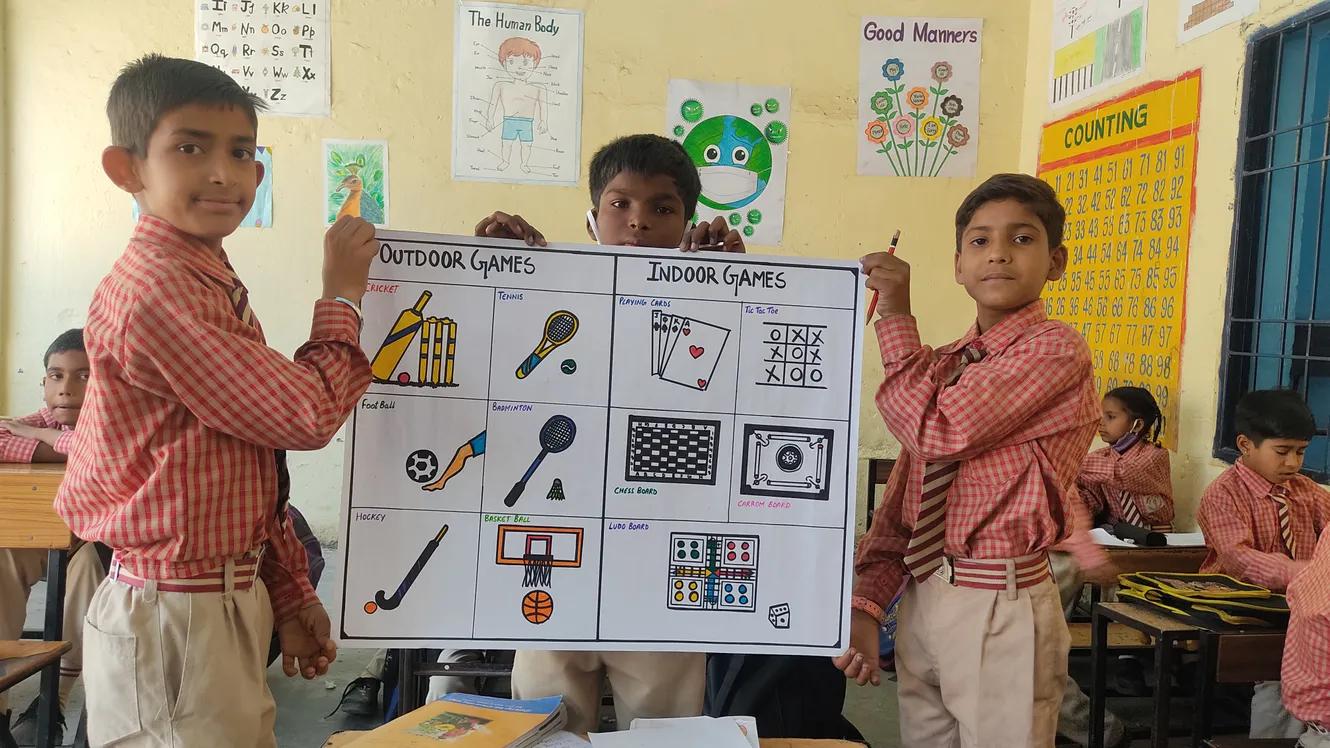Benin
Health
Training dogs to detect breast cancer, a method for screening disadvantaged women in Benin
With the Sambhavana program, the organization Humana People to People India (HPPI) intends to help out-of-school children between the ages of 12 and 14 return to school. In the pilot phase, HPPI is testing three alternative solutions with the aim of optimizing the impact and the scaling up of the project.
Project deployed by:
In India, despite considerable progress in school enrolment, nearly 4% of children aged 11-14 are out of school. The advent of the Covid-19 pandemic has led to disruption of schooling for many more children in the country.
In the state of Haryana, 4.5% of children, amounting to about 65,000 children, are not enrolled in upper primary school (grade 6-8) compared to 2% in 2018. Half of the children in grade 8 in public schools are unable to perform basic mathematical operations, and 27% of children at this level possess basic reading skills (ASER Report 2020).
Out-of-school children aged 11-14 are particularly vulnerable due to their exclusion from the system, socio-economic pressures and low literacy.

Sambhavana is a learning enhancement programme for upper primary/middle school and designed for out-of-school children in the age group of 12-14 years of age. It combines academic learning with experiential learning tailored to the holistic development of older children. **The 24-months programme is designed to ensure that children enroll, learn and stay in school until at least the end of primary education **(grade 8) and to remove barriers that prevent them from achieving this goal.
The programme will be tested with 450 children enrolled in the pilot project.

The project aims to explore the potential for scaling up and impact of 3 distinct models with the implication of local government and, independently with CSR (corporate social responsibility) funding and foundations:
Model 1: Base Model Sambhavana Project Centre. This “medium cost” model seeks targeted impact by providing high-quality learning with holistic development of children through a tech-enriched experience. This is aimed to be implemented within private sector funds (Corporate Social Responsibility).
Model 2: Enhanced Model Sambhavana Project Centre. This “high cost-high impact” model envisages topping up of the Model 1 Sambhavana centre with digital-literacy and life-skills courses that are designed to benefit the children in the age groups 13-14 who will either end up pursuing higher education or try for jobs – both avenues needing strong life and digital literacy foundations. This is aimed to be implemented with funding from “high-potential donors” (CSR and Foundations).
Model 3: Governement-School Integrated High Scale Model. Given India’s vast Government school network established under the Right to Education Act, which guarantees free education to children till the age of 14 years, scaling of the Sambhavana model through Government schools is a logical pathway to scale. This is the low-cost, low-tech and print-based model.
An important objective of the project is to collect implementation and results indicators of the Sambhavana Programme in each implementation model and document potential scaling plans for each model. In the long term, the results of this pilot study could be leveraged to replicate the Sambhavana project to reach a larger number of children.
Projects
Projects funded by FID